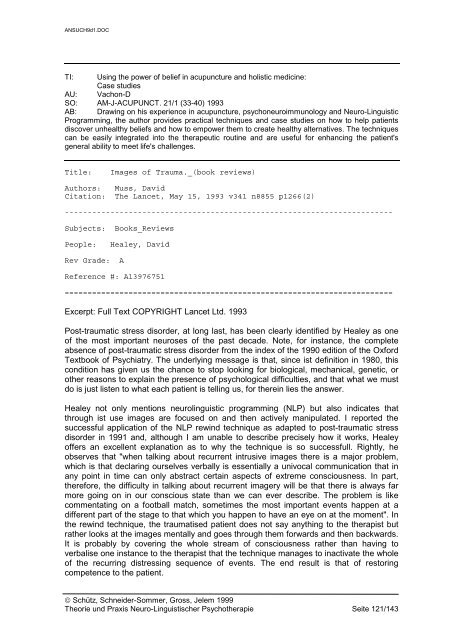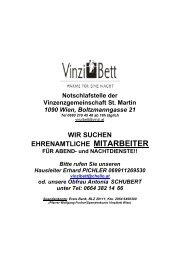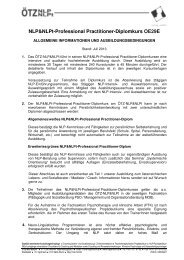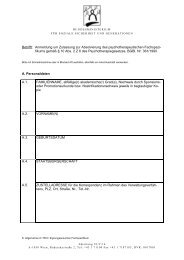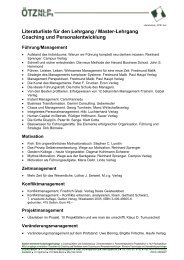AUSGANGSLAGE
AUSGANGSLAGE
AUSGANGSLAGE
Erfolgreiche ePaper selbst erstellen
Machen Sie aus Ihren PDF Publikationen ein blätterbares Flipbook mit unserer einzigartigen Google optimierten e-Paper Software.
ANSUCH9d1.DOC<br />
TI: Using the power of belief in acupuncture and holistic medicine:<br />
Case studies<br />
AU: Vachon-D<br />
SO: AM-J-ACUPUNCT. 21/1 (33-40) 1993<br />
AB: Drawing on his experience in acupuncture, psychoneuroimmunology and Neuro-Linguistic<br />
Programming, the author provides practical techniques and case studies on how to help patients<br />
discover unhealthy beliefs and how to empower them to create healthy alternatives. The techniques<br />
can be easily integrated into the therapeutic routine and are useful for enhancing the patient's<br />
general ability to meet life's challenges.<br />
Title:<br />
Images of Trauma._(book reviews)<br />
Authors: Muss, David<br />
Citation: The Lancet, May 15, 1993 v341 n8855 p1266(2)<br />
------------------------------------------------------------------------<br />
Subjects: Books_Reviews<br />
People:<br />
Healey, David<br />
Rev Grade: A<br />
Reference #: A13976751<br />
========================================================================<br />
Excerpt: Full Text COPYRIGHT Lancet Ltd. 1993<br />
Post-traumatic stress disorder, at long last, has been clearly identified by Healey as one<br />
of the most important neuroses of the past decade. Note, for instance, the complete<br />
absence of post-traumatic stress disorder from the index of the 1990 edition of the Oxford<br />
Textbook of Psychiatry. The underlying message is that, since ist definition in 1980, this<br />
condition has given us the chance to stop looking for biological, mechanical, genetic, or<br />
other reasons to explain the presence of psychological difficulties, and that what we must<br />
do is just listen to what each patient is telling us, for therein lies the answer.<br />
Healey not only mentions neurolinguistic programming (NLP) but also indicates that<br />
through ist use images are focused on and then actively manipulated. I reported the<br />
successful application of the NLP rewind technique as adapted to post-traumatic stress<br />
disorder in 1991 and, although I am unable to describe precisely how it works, Healey<br />
offers an excellent explanation as to why the technique is so successfull. Rightly, he<br />
observes that "when talking about recurrent intrusive images there is a major problem,<br />
which is that declaring ourselves verbally is essentially a univocal communication that in<br />
any point in time can only abstract certain aspects of extreme consciousness. In part,<br />
therefore, the difficulty in talking about recurrent imagery will be that there is always far<br />
more going on in our conscious state than we can ever describe. The problem is like<br />
commentating on a football match, sometimes the most important events happen at a<br />
different part of the stage to that which you happen to have an eye on at the moment". In<br />
the rewind technique, the traumatised patient does not say anything to the therapist but<br />
rather looks at the images mentally and goes through them forwards and then backwards.<br />
It is probably by covering the whole stream of consciousness rather than having to<br />
verbalise one instance to the therapist that the technique manages to inactivate the whole<br />
of the recurring distressing sequence of events. The end result is that of restoring<br />
competence to the patient.<br />
© Schütz, Schneider-Sommer, Gross, Jelem 1999<br />
Theorie und Praxis Neuro-Linguistischer Psychotherapie Seite 121/143


